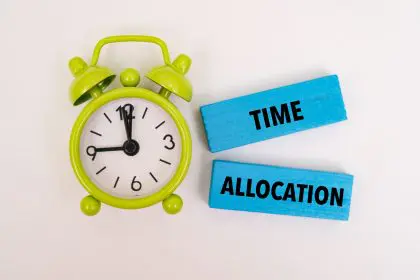The modern workplace has created an epidemic of mental exhaustion that leaves millions of Americans feeling drained, unfocused and overwhelmed by the end of each day. Traditional coffee breaks and quick scrolls through social media aren’t providing the mental restoration that overworked brains desperately need to maintain peak performance and emotional wellbeing.
The solution lies in transforming ordinary work breaks into powerful mental recharge sessions using scientifically-backed techniques that reset cognitive function in just minutes. These strategic break-time habits harness the brain’s natural recovery mechanisms to restore focus, creativity and energy levels throughout the workday.
The difference between mindless break activities and intentional mental recharge techniques can mean the difference between surviving the workday and thriving through it. These seven habits have emerged as particularly effective for combating mental fatigue while fitting seamlessly into typical workplace break schedules.
Deep breathing exercises reset nervous system instantly
The first and most powerful break-time habit involves controlled breathing exercises that immediately shift the nervous system from stress mode into recovery mode. This technique requires no equipment, works anywhere and delivers measurable results within two to three minutes of practice.
The 4-7-8 breathing pattern serves as the foundation for instant mental reset. Inhale for 4 counts, hold the breath for 7 counts, then exhale slowly for 8 counts. This specific rhythm activates the parasympathetic nervous system, which governs rest and recovery functions while reducing stress hormone production.
Box breathing offers an alternative pattern that works equally well for mental recharge. Inhale for 4 counts, hold for 4 counts, exhale for 4 counts, and hold empty for 4 counts before repeating. This technique creates mental clarity while regulating heart rate and blood pressure for comprehensive nervous system reset.
The physiological changes from deep breathing exercises include increased oxygen delivery to the brain, reduced cortisol levels, and improved heart rate variability. These changes create immediate improvements in mental clarity, emotional stability and cognitive performance that last well beyond the break period.
Micro-meditation sessions restore mental clarity
Brief meditation sessions during work breaks provide profound mental restoration without requiring extensive time commitments or special training. These micro-meditations focus on simple awareness techniques that interrupt mental chatter while restoring cognitive resources depleted by sustained concentration.
The body scan meditation technique involves systematically focusing attention on different body parts for 30 seconds each, starting from the feet and moving upward. This practice redirects mental energy away from work stressors while promoting physical relaxation that supports mental recovery.
Mindful observation meditation uses immediate surroundings as focal points for awareness practice. Spend 3-5 minutes observing details in the environment such as colors, textures, sounds or movements without judgment or analysis. This technique creates present-moment awareness that interrupts worry cycles and mental fatigue.
Breathing awareness meditation simply involves focusing attention on natural breath patterns without attempting to control or change them. When the mind wanders to work concerns, gently redirect attention back to breathing sensations. This basic technique provides immediate stress relief while training attention control skills.
Progressive muscle relaxation releases physical tension
Physical tension accumulates throughout the workday and directly contributes to mental fatigue by requiring constant subconscious energy to maintain muscle contractions. Progressive muscle relaxation techniques during breaks release this tension while freeing up mental resources for cognitive tasks.
The rapid tension-release sequence involves tensing specific muscle groups for 5 seconds then releasing completely while focusing on the contrast between tension and relaxation. Start with hands and arms, progress through shoulders and neck, then address facial muscles and jaw tension that commonly accumulates during concentrated work.
Shoulder and neck releases provide targeted relief for the most common areas of workplace tension. Roll shoulders backward 10 times, then forward 10 times. Gently stretch the neck by looking up, down, left and right, holding each position for 10 seconds. These movements improve blood flow while reducing muscle tension that contributes to mental fatigue.
Facial tension release involves deliberate relaxation of muscles around the eyes, forehead, jaw and mouth. Many people unconsciously furrow their brow or clench their jaw during concentrated work, creating ongoing tension that drains mental energy. Conscious relaxation of these muscles provides immediate relief and mental clarity.
Movement breaks boost cognitive function
Physical movement during breaks creates immediate improvements in cognitive function by increasing blood flow to the brain while providing natural stress relief through endorphin release. These movement habits require minimal space and time while delivering maximum mental recharge benefits.
Desk stretches target areas most affected by prolonged sitting while promoting circulation and mental alertness. Reach arms overhead and stretch to each side, twist the torso left and right, and stretch forward to touch toes or desk surface. These movements counteract physical stagnation while energizing the mind.
Walking meditation combines the benefits of physical movement with mindfulness practice for comprehensive mental restoration. Take a slow, deliberate walk for 5-10 minutes while focusing attention on foot sensations, breathing patterns, or environmental observations. This technique provides exercise benefits while practicing meditation skills.
Stair climbing or brief cardio bursts elevate heart rate and breathing for immediate mental energy boosts. Climb stairs for 2-3 minutes or perform jumping jacks, marching in place, or other simple cardio exercises that fit the available space. The increased circulation and endorphin release provide lasting mental clarity improvements.
Digital detox breaks prevent mental overload
Constant exposure to screens, notifications and digital information creates mental overload that accumulates throughout the workday. Strategic digital detox breaks allow the brain to process accumulated information while preventing the sensory overwhelm that contributes to mental fatigue.
The complete digital disconnect involves putting away all electronic devices for 10-15 minutes while engaging in non-digital activities. This break from constant stimulation allows the brain to consolidate information and reset attention mechanisms that become depleted through continuous digital engagement.
Nature viewing through windows or brief outdoor experiences provide natural mental restoration that counteracts digital fatigue. Even looking at plants, sky, or outdoor scenes for 5 minutes can reduce mental fatigue while improving mood and cognitive performance through connection with natural environments.
Analog activities during breaks include reading physical books or magazines, writing with pen and paper, or engaging in hands-on creative activities. These non-digital pursuits use different cognitive pathways while providing mental stimulation that doesn’t contribute to digital overload.
Hydration and nutrition habits fuel mental performance
Proper hydration and strategic nutrition during breaks provide the biochemical foundation for sustained mental performance while preventing the energy crashes that contribute to afternoon mental fatigue. These habits support optimal brain function through targeted nutrient delivery.
Water intake during breaks should focus on consistent hydration rather than large quantities consumed infrequently. Drink 8-12 ounces of water during each break while paying attention to hydration cues such as energy levels, concentration ability, and physical comfort. Dehydration as mild as 2% can significantly impair cognitive performance.
Protein-rich snacks during breaks provide sustained energy while preventing blood sugar fluctuations that contribute to mental fatigue. Nuts, seeds, yogurt, or hard-boiled eggs offer steady energy release without the crashes associated with sugary snacks that initially seem energizing but ultimately worsen mental fatigue.
Avoiding caffeine crashes requires strategic timing and moderation of coffee and energy drink consumption. Limit caffeine to early morning hours and replace afternoon caffeine with herbal teas or simply water to prevent the disrupted sleep patterns that contribute to next-day mental fatigue.
Creative engagement stimulates different brain networks
Engaging in creative activities during breaks activates different neural networks than those used for focused work tasks, providing mental restoration through cognitive variety rather than rest alone. These creative breaks prevent mental stagnation while building skills that enhance overall cognitive flexibility.
Doodling or sketching requires no artistic skill but provides immediate mental benefits through hand-eye coordination and creative expression. Keep paper and pens available for spontaneous drawing sessions that engage visual-spatial processing areas of the brain while providing relaxation benefits.
Writing exercises such as journaling, poetry, or creative storytelling activate language centers while providing emotional processing opportunities that reduce workplace stress. Spend 5-10 minutes writing about anything unrelated to work tasks to engage different cognitive systems while processing daily experiences.
Musical activities like humming, singing, or listening to music activate auditory processing centers while providing emotional regulation benefits. Create playlists specifically for break-time mental recharge that include songs with positive emotional associations and appropriate energy levels for the desired mental state.
Social connection breaks enhance emotional wellbeing
Human connection during breaks provides emotional restoration that supports mental performance through improved mood, reduced stress, and enhanced motivation. These social habits counteract the isolation that can develop in focused work environments while providing natural stress relief.
Brief conversations with colleagues about non-work topics provide social stimulation while creating positive emotional experiences that enhance overall workplace satisfaction. Keep conversations light, positive, and time-limited to prevent break time from becoming additional work obligations.
Phone calls or text messages with family and friends create emotional connections that provide perspective on work challenges while reinforcing personal relationships that support overall wellbeing. Limit these communications to positive, supportive interactions that enhance rather than drain mental energy.
Gratitude expressions through verbal appreciation, thank-you notes, or simply acknowledging positive aspects of the work environment create positive emotional states that improve mental resilience and job satisfaction while strengthening workplace relationships.
Optimal break timing maximizes mental restoration
The timing and frequency of mental recharge breaks significantly impact their effectiveness for sustaining cognitive performance throughout the workday. Strategic break scheduling prevents mental fatigue accumulation while maintaining productivity flow states.
The 90-minute work cycle aligns break timing with natural attention rhythms that most people experience. Take 10-15 minute mental recharge breaks every 90 minutes to prevent cognitive overload while maintaining focus during work periods. This timing prevents the deep mental fatigue that makes recovery more difficult.
Morning breaks should focus on energizing techniques like movement, deep breathing, or creative engagement to build momentum for the day. Afternoon breaks benefit from more restorative practices like meditation, progressive relaxation, or nature viewing to counteract accumulated fatigue.
End-of-day transition breaks help separate work mental states from personal time, preventing work stress from contaminating home life. Spend 10 minutes using mental recharge techniques before leaving work to create clear boundaries between professional and personal mental states.
Building sustainable break-time habits
Creating lasting change requires starting with one or two break-time habits rather than attempting to implement all techniques simultaneously. Choose habits that feel most appealing or address the most pressing mental fatigue symptoms to build initial success and motivation.
Habit stacking involves pairing new break-time practices with existing routines such as coffee breaks, bathroom visits, or transition times between meetings. This approach leverages established patterns while adding mental recharge benefits without requiring additional time commitments.
Environmental modifications such as keeping water bottles visible, setting phone reminders for break times, or creating designated spaces for relaxation activities support consistent practice of mental recharge habits while reducing barriers to implementation.
Tracking mental energy levels before and after implementing break-time habits provides feedback on effectiveness while building awareness of personal patterns and preferences for mental restoration techniques.
















